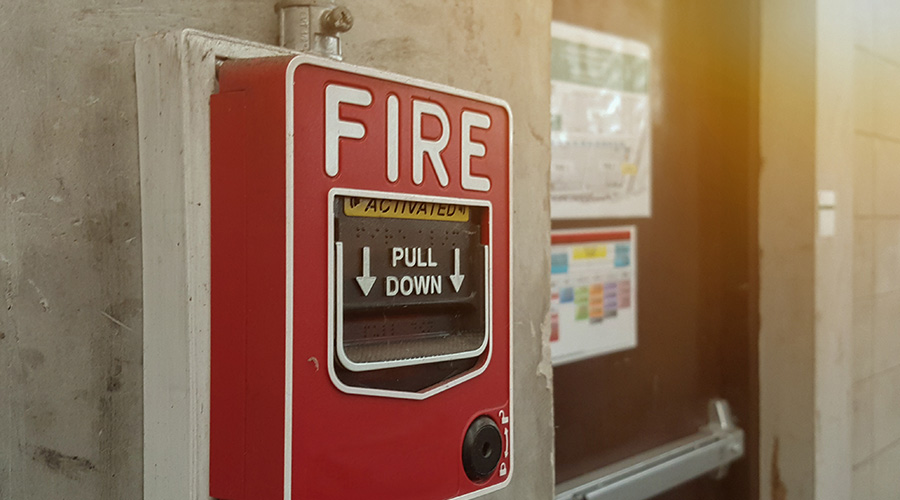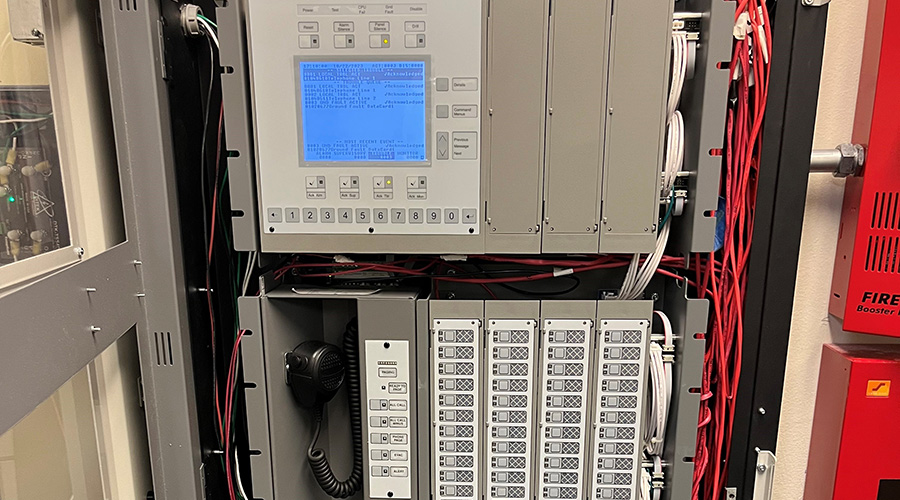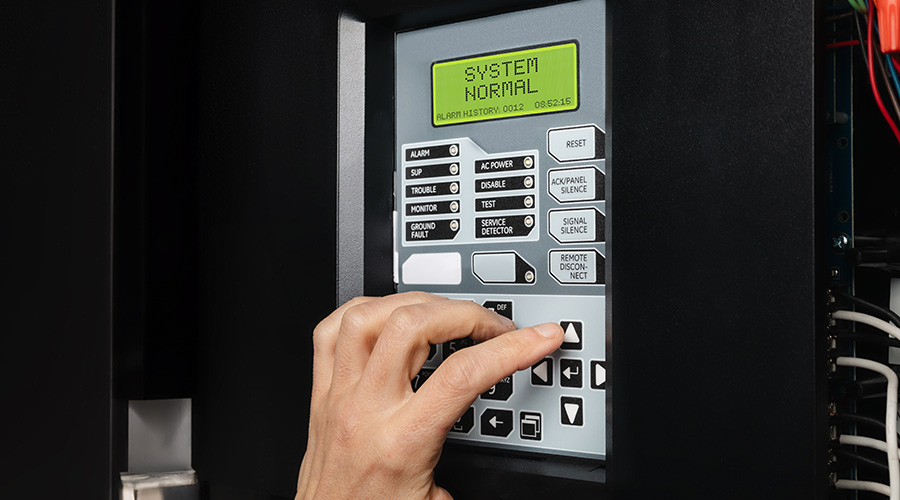Flexible Design Can Improve Fire Safety
An alternative to prescriptive building codes, performance-based designs are tailored for specific facilities
An office building with a movie theater, a residential high-rise with retail space and restaurants at ground level, educational facilities configured around an elaborate atrium — new approaches to urban redevelopment and communal living have made such hybrid construction not the exception, but the rule.
Such structures create challenges for fire safety design. Traditional building codes are prescriptive in nature. These codes specify just how fire and life safety systems should be designed, installed, tested and maintained.
This prescriptive approach works well for traditional building classifications and occupancies — the majority of projects. When dealing with mixed occupancy buildings, however, owners and designers are confronted with the conundrum of which code to follow? Applying the most stringent code requirements throughout a facility may be the safest bet; yet that strategy frequently adds unnecessary costs.
In recent years, building departments and authorities having jurisdiction have become receptive to an alternative approach known as performance-based designs. The performance-based strategy uses customized fire- and life-safety solutions that meet or exceed the intent of the prescriptive code.
Performance-based design provides fire-safety solutions for a specific use or application. It allows facility executives and engineers to choose certain variables in the building code and apply them partially to the design, provided they are able to demonstrate to the local fire or building department that the solution meets the intent of the written code or provides a better solution for the safety of the occupants and the integrity of the building.
Performance-based designs are more complicated and impose additional design and maintenance requirements. Nevertheless, for complex fire and safety conditions or situations not readily addressed with prescriptive codes, a performance-based approach may be the best choice.
Laying the Groundwork
Performance-based design generally starts with an analysis of various fire scenarios. This involves establishing fire safety goals (performance objectives include life safety, property protection, mission continuity and environmental protection), evaluating building occupancy and contents, and identifying potential hazards. Once this data has been collected and assessed, it is entered into a fire modeling computer program — such as ASCOS (Analysis of Smoke Control Systems) or DETACT (Calculation of Detector Actuation Time) — which creates a fire model applicable to the situation in question. After the fire model is complete, a proposed solution must be developed and assessed by the design team. It is at this phase that the proposed performance-based design is presented to the authorities having jurisdiction for approval.
A performance-based design might show that, in the specific space, smoke would migrate in such a way that the the code-mandated number of smoke detectors could safely be reduced or relocated to provide an enhanced response time to fire. A design professional following the letter of the prescriptive code could be over-designing the system.
The prescriptive approach in developing fire-resistive ratings does not account for the variables that affect fire growth. Variables such as room contents, distribution and location of the fire load, ceiling height and configuration, ventilation, room size and shape, and structural resistance are not considered in most model building codes. By taking these factors into account, a performance-based approach adds flexibility in design, meets the intent of the prescriptive code, and potentially lowers installation and life-cycle costs.
Typically, performance-based design solutions will not look at just one building system in isolation, but rather account for how all building systems will work together in a particular architectural layout. A performance-based design solution would not focus solely on smoke detectors, for example, but rather on the way they would interface with fire protection systems, smoke compartments, fire/smoke barriers, and smoke purge and exhaust systems.
Making it work
In a recent project, designers applied a performance-based solution to an atrium in a mixed occupancy educational facility. The building code stated that HVAC systems of atriums could not be interconnected with any other systems in the building. Rather than installing independent HVAC systems, however, the new design stipulated the use of a smoke-detection system, combined with an automatic sprinkler system, automatic fire/smoke barriers (shutters), an atrium smoke purge system and a series of automatic fire/smoke dampers.
These design features, supported by the use of a fire-modeling program (ASMET — which modeled atria smoke management), were accepted by the authorities having jurisdiction. This eliminated the need for an independent HVAC system for the atrium, resulting in substantial cost savings for the owner.
Staying legal
While weighing the potential benefits of performance-based designs, facility executives also have to be aware of the increased maintenance costs inherent in that approach.
Unlike traditional code-based designs, performance-based designs have to continuously demonstrate their compliance with the performance goals they were initially intended to provide.
In addition to creating and supplying the local authorities with approved operations and maintenance manuals, facility executives have to certify annually that systems are being maintained in accordance with all documents, assumptions and specifications that had been provided on initial installation. All changes to the building must be approved in advance by the authorities having jurisdiction, and change of ownership does not release building management from compliance with the original maintenance requirements.
Making the decision
Given the cost and effort involved in creating, gaining approval, and finally maintaining a performance-based design, they should be used only when providing extraordinary safety features. Wherever possible, it is best to try to combine different sections of the existing code before committing to the expense of a performance-based option. That’s all the more true as model codes begin to incorporate performance-based design options. (See box below.)
Even so, some facilities present conditions that complicate adherence to prescriptive codes. That’s why performance-based designs have their place in today’s diverse construction landscape.
James Carrigan is an associate partner/supervising engineer for fire and life safety in the New York City office of Syska Hennessy Group, a consulting, engineering, technology and construction firm that provides technical solutions in such areas as building system design, facilities management, energy management, technology consulting/engineering, and turnkey design/build services. Carrigan is also a New York State Certified Firefighter/Paramedic, former chief officer and current administrator of the East Rockaway, N.Y., Fire Department.
The Rise of Performance-Based Design
While performance-based designs and building codes have been widely used in countries such as Australia, New Zealand, Japan, Sweden, the Netherlands and the United Kingdom for well over a decade, implementation in the United States has been slow.
This is partly because performance-based codes and standards in the United States must be adopted at the local government level, which impedes implementation. At this point, a relatively small percentage of new construction nationwide relies on performance-based designs.
When performance-based designs are used, it is at least in part because building codes have not kept pace with technological innovation and current construction practices. To account for this fact, the National Fire Protection Association (NFPA) has begun to include performance-based options in several of its prescriptive codes, including:
- NFPA 1 (Uniform Fire Code)
- NFPA 13 (Standard for the Installation of Sprinkler Systems)
- NFPA 72 (National Fire Alarm Code)
- NFPA 101 (Life Safety Code)
- NFPA 5000 (Building Construction and Safety Code)
The International Code Council also addresses performance-based design in documents that include:
- International Performance Code
- International Building Code
- International Fire Code
However, even if building codes were revised to account for many of the changes that have been affecting the construction industry over the past several decades, it is unlikely that they would be able to cover all eventualities. In all likelihood, performance-based designs are here to stay and may even be used more often.
— James Carrigan
|
Sophisticated Software Helps Analyze Behavior of Fires
Performance-based designs depend on sophisticated software to analyze the way a fire will behave in a given space. The federal government has developed powerful programs that can be used to understand aspects of a fire.
The National Institute of Standards and Technology (NIST) has played an important role in this work. In its World Trade Center Investigation Final Report, NIST says “performance-based methods are an alternative to prescriptive design methods.”
For example, fire-modeling programs available through the NIST Fire Research Division can analyze the effect of smoke control systems and smoke movement based on a variety of fire conditions within a building. The programs can also determine the time required to evacuate people from high-rise buildings or evaluate how the use of elevators and stairways can reduce overall evacuation time in non-fire situations.
The National Institute for Occupational Safety and Health is developing modeling programs for smoke management and fire for underground mines. Engineers at the NIST Building and Fire Research Laboratory have also developed software packages that help fire investigators, safety officials, architects and engineers better understand, visualize and predict the movement and temperatures of smoke and hot gases caused by fire, wind and ventilation systems and the behavior of fire detection and suppression systems.
The Fire Dynamics Simulator numerically models smoke and gas movement, predicting gas temperatures, heat fluxes, gas velocities and sprinkler activation times. The Smokeview feature permits graphical visualization of the data.
Programs such as these have also been adopted by the National Association of Fire Investigators to assist in determining the cause and origin of fires.
|
Related Topics:











